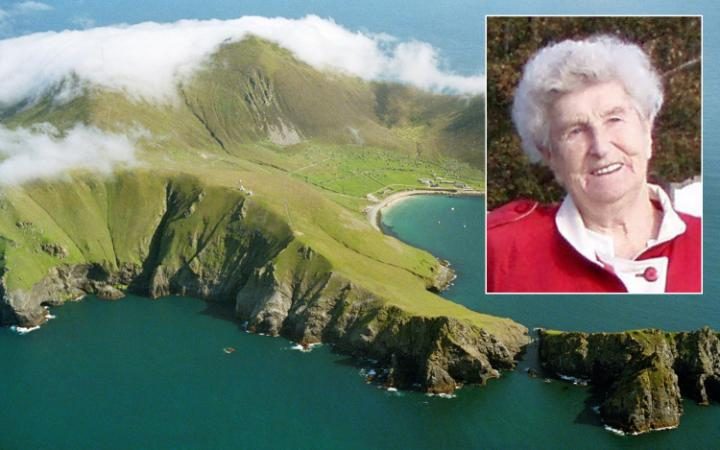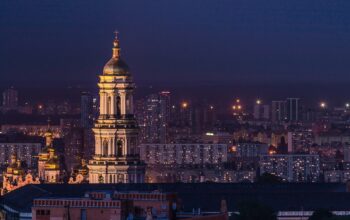Emotional tributes have been paid to the last native of the remote island St Kilda whose death has marked the “end of an era”.
Rachel Johnson, 93, was just eight years old when the remaining 36 residents were evacuated from the remote Atlantic archipelago in 1930.
The island sits on the outermost reach of the Outer Hebrides, 110 miles off the west coast of Scotland, and was routinely cut off by stormy seas and plagued by illness.
Rachel, born in July 1922, was just a child at the time of the evacuation aboard HMS Harebell on August 29 1930.
She lived out the last years of her life in a care home in Clydebank, Dunbartonshire.
And the mere mention of St Kilda was said to cause a gentle smile to light up her face.
St Kilda is now owned by the National Trust for Scotland which, together with Scottish Natural Heritage and the MoD, run conservation projects on the island.
Alexander Bennett, the general manager for countryside and islands north at the National Trust for Scotland, said Rachel’s death marked the end of an era.
He said: “It is a sad day and truly the end of an era to learn that the last of the native St Kildans has passed away.
“I was privileged enough to have met Rachel on a number of occasions. She was intensely private but extremely kindly.
“On behalf of the National Trust for Scotland and all who care for St Kilda, we offer our condolences to her family and many friends.”
As a youngster growing up in the close-knit community, Rachel’s duties included being lowered by rope off cliffs to scoop up puffin, gannet and fulmar eggs.
She would help her mother prepare meals and often walk along the shore to collect seaweed which the islanders would dry and burn as fuel.
Children on the island received basic schooling and once the day’s lessons were over, they would go and play down by the water’s edge.
Rachel’s son, Ronnie Gillies Johnson, 61, from Clydebank, Dunbartonshire, said: “If you asked her about St Kilda now, she would look at you and smile.
“St Kilda was an important part of her life, but she did not speak much about it.”
The St Kildans lived in a semi-circle of 16 cottages and Rachel stayed at number 13 with her parents Christina, Donald and her older sister Cathie [corr].
Their remote life was based on a strong sense of community where each member had to do their bit — including the children.
Ronnie, a draftsman, said: “The people would meet in the morning and decide what the day’s work was.
“It could be fishing, looking after the sheep or basic building work.
“My mother would often go down to the cliffs and collect bird’s eggs.
“The men would lower her down with a rope and she would pick the eggs from a nest on the ledge and put them in a wee coracle.
“She would help to prepare meals or pick up seaweed from the beach. The people would dry it in a hut and then use it as fuel.
“It was a very hard life on St Kilda, but there was a great sense of community.
“But if they had stayed there any longer more people would have probably died.”
Unlike those born on the mainland, the islanders had little resistance to diseases, and when Rachel’s aunt Mary died of appendicitis after giving birth, they decided to leave.
The St Kildans petitioned the government to be resettled to the mainland and boarded the Harebell for Lochaline, Highlands, on 29 August 1930.
Rachel was only eight years old when the once close-knit community was broken up and scattered to the four winds.
But the Gillies family did not venture far — they settled in a cottage at Larachbeg, near Lochaline in the Highlands.
Rachel spoke Gaelic and only very little English at the time, but she managed to catch up at nearby Claggan School, Highlands.
At weekends she worked at the Ardtornish [corr] Highland estate, where she helped out with general household duties.
Rachel was also a dedicated and talented highland dancer and she competed at events across Scotland, where she caught the attention of a young house builder.
Ronnie Johnson from Luss, Argyll and Bute, spotted Rachel at the Lochaline village hall and after winning her heart he proposed and married her in Oban, Argyll and Bute.
The couple moved to a small tenement in Scotstoun, Glasgow, in 1949 and then settled in Clydebank with their two sons, Ronnie and Malcolm.
Rachel worked as a dinner lady at Kilbowie Primary School in Clydebank and never pursued a career as she dedicated herself to family life.
And although she had found a new home on the mainland, she would keep some traditions of the devout St Kilda community alive.
Ronnie said: “Her family would walk to church in any weather, no matter if it was rain or hail.
“This was one of the main things. Sunday was always just a day of rest. That is the way it used to be.
“My mother would go to church every Sunday — without a fail. If she was feeling ill or had difficulty walking, she would arrange a lift.
“It was always a quiet day in our house, apart from going to church, because meals were always prepared on a Saturday.
“She was always very family-orientated wanted to do the best she could.
“My mother never wanted to be in the limelight. She was just a family person who looked after me, my brother and my dad – that was good enough for her.”
Rachel only went back to St Kilda on two occasions — once for a documentary and once on invitation of the army to see the transformation the island had gone through.
She became an honorary member of the National Trust and their annual meeting would be one of the only times she would speak of her heritage.
Ronnie added: “She would answer questions at this gathering, but she would never give interviews.
“Her family were not interested in all of the publicity or making a fortune — they just attended to what they had and they were happy with the simple life.”
Rachel had five grandchildren.




